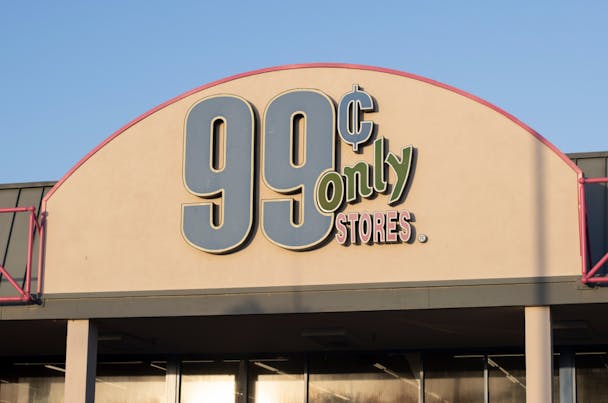Marketers unpack why 99 Cents Only Stores shuttered its 371 locations
The shutdown not only marks the end of an era for price-conscious consumers but also serves as a cautionary tale for even the most established businesses to stay agile in the face of increasing competition.

The discount chain has announced it will be closing its 371 locations nationwide / Credit: Adobe Stock
On Thursday, 99 Cents Only Stores, a staple discount retailer in the western United States, announced the closure of its 371 locations across Arizona, California, Nevada and Texas. Liquidation sales of its in-store merchandise have already commenced.
In a statement, the recently resigned interim CEO Mike Simoncic lamented the necessity of the decision and the formidable challenges the company has faced in recent years. These include the unprecedented impact of the pandemic, shifting consumer preferences, increased levels of shrinkage, inflation and other macroeconomic headwinds. “We deeply appreciate the dedicated employees, customers, partners and communities who have collectively supported 99 Cents Only Stores for decades,” he said.
The shuttering of 99 Cents Only Stores underscores a broader struggle faced by discount retail chains nationwide. Last year witnessed the closure of over 50 Big Lots stores, with the trend continuing into 2024. Dollar Tree recently announced plans to shut down 1,000 stores, including 600 Family Dollar locations slated for closure in the first half of 2024.
Despite their initial shock, marketers understand the reasons behind the decision, which underscore the enduring challenges faced by traditional brick-and-mortar businesses in an increasingly digital space.
Katya Varbanova, CEO of content marketing firm Viral Marketing Stars, shopped at 99 Cents Only stores as a student. She fears that the decision may disproportionately affect low-income consumers who rely on such stores for affordable essentials.
“Over a decade ago, discount chains were my go-to shops for essentials, such as toiletries, cleaning products, food and more. Plus, they allowed me to not get distracted by expensive shiny products,” she said. “Consumers who live paycheck-to-paycheck value saving money over the brand experience.”
However, marketers anticipated these challenges as e-commerce alternatives like Amazon, Temu and Alibaba rose to prominence. Reilly Newman, founder and brand strategist of branding studio Motif Brands, reflected on the emerging digital challengers shaping the industry.
He remarked: “The announcement surprised me, but it also makes sense. These dollar stores blew up in 2020; their stock prices were going nuts at the time, and rightfully so, because people were trying to make every dollar count due to the uncertainty in the market. But these competing digital forces have driven out these low-cost providers.”
While quoting Jeff Bezos’ famous line, “Your margin is my opportunity,” Newman explained how digital brands have undercut brick-and-mortar businesses by operating with lower overhead costs and offering identical products at competitive prices.
At the same time, Newman expressed surprise at the complete closure of 99 Cents Only Stores, suggesting that the company could have explored online options. He also noted the minimal marketing spend of such brands, compared with Temu, which launched Super Bowl ads as part of its US expansion efforts. “Price and strategy play a large role in any position; that’s the main indicator. Now that indicator is in the pocket of most consumers on their phones. Who’s going to win that race?”
Other experts are concerned that e-commerce retail may not adequately substitute brick-and-mortar stores, like Linda Johansen James, chief executive of International Retail Group, a boutique retail management and consulting firm.
“The disappearance of discount stores will leave a large hole in the retail landscape,” she said. “Alternatives could include thrift stores, online discount retailers and community-driven swap meets or marketplaces. But these aren’t even comparable because these stores don’t offer that convenience factor and might not be able to keep up with the lower price points historically established by [these] stores.”
For more, sign up for The Drum’s daily newsletter here.

